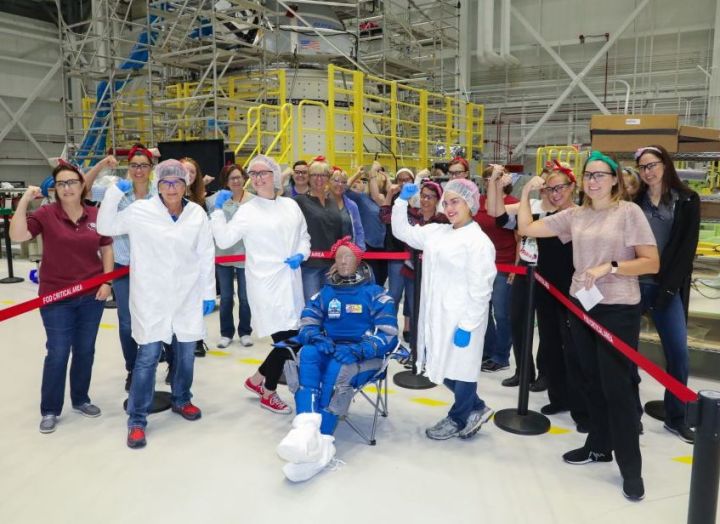
Mannequins in space. No, not the name of a really bad movie, but instead a way of helping researchers learn more about the effects of space flight on humans.
Blue Origin sent up a test dummy (or “anthropomorphic test device” (ATD), as NASA prefers to call it) in its New Shepard rocket in 2017, while SpaceX put one in its Crew Dragon capsule for a trip to the International Space Station (ISS) earlier this year.
And on Friday, December 20, “Rosie the Astronaut” will head into space aboard Boeing’s Starliner in what will be the capsule’s debut mission to the ISS as part of NASA’s Commercial Crew Program.
Rosie, like the ATDs that have gone before, will be kitted out with an array of sensors that will activate the moment the ULA Atlas V rocket carrying the Starliner launches from Cape Canaveral Air Force Station in Florida early Friday.
According to Space.com, Rosie’s sensors will monitor critical data points such as the G-force experienced in the skull, neck, and spine. The research will help to ensure the safety of U.S. astronauts who could be traveling to the ISS aboard the Starliner as early as next year.
Rosie the Astronaut is named after the iconic, bandana-wearing WWII icon Rosie the Riveter who inspired a social movement encouraging women to join the war effort and enter the workplace in general.
“Rosie is a symbol of not only the women who are blazing a trail in human spaceflight history, but also of everyone who has shown grit and determination while working tirelessly to ensure the Starliner can transport astronauts safely to and from the ISS,” Leanne Caret, president of Boeing’s Defense, Space & Security division, told Florida Today recently.“She’s flying for everyone on our team who took on the challenge of human spaceflight and said, ‘We can do it.’”
Rosie, who will be in the Starliner’s commander seat for the mission, will be traveling along with around 600 pounds of supplies for the ISS, with the capsule scheduled to bring critical research samples back to Earth on its return trip.
If you’re interested in watching the Starliner’s first orbital test flight later this week, this Digital Trends report tells you all you need to know.
Editors' Recommendations
- Astronauts take major step toward Starliner’s first crewed flight
- See what the solar eclipse looked like from space
- SpaceX all set for a record-breaking rocket launch on Friday
- What kind of view will ISS astronauts get of the solar eclipse?
- SpaceX shares stunning night shot of its Super Heavy booster


